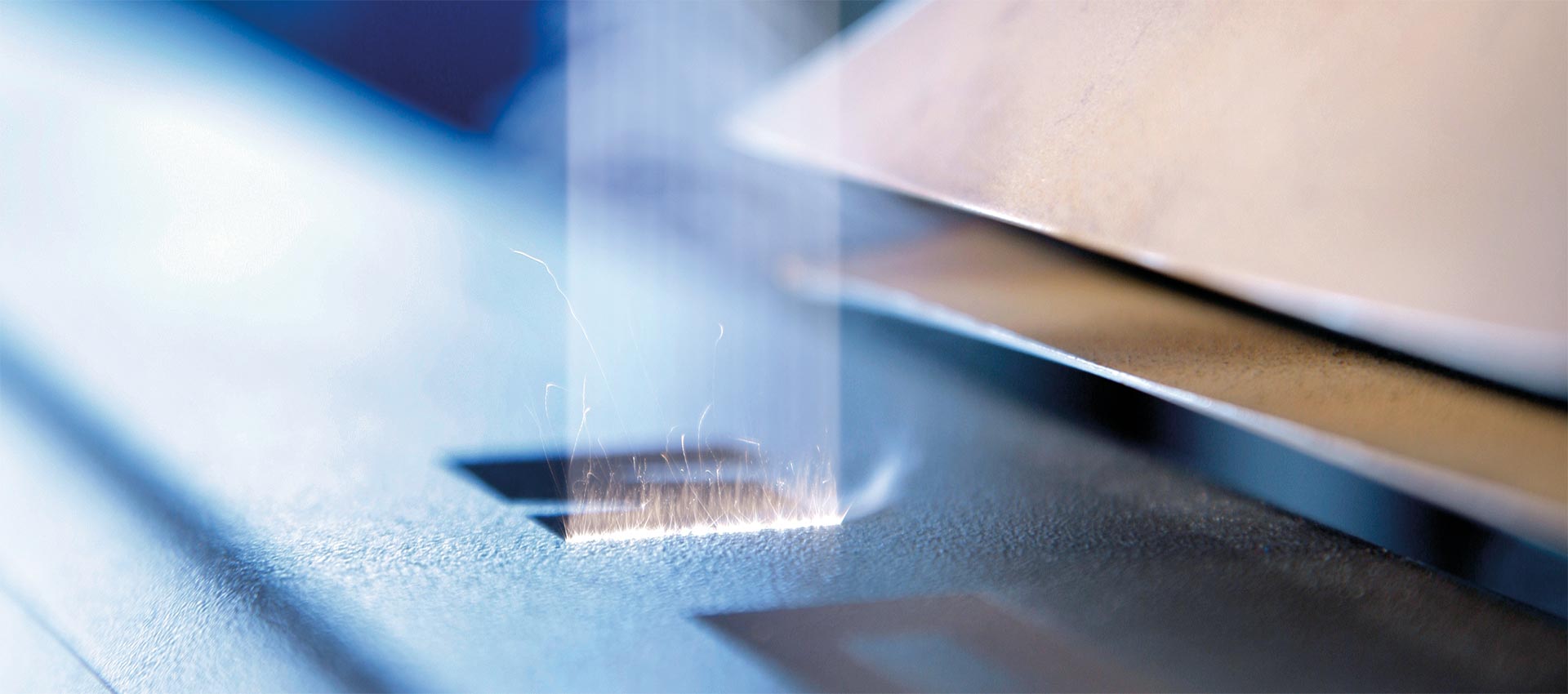
Laser marking
Laser marking is a thermal process in which a high-energy beam of focussed laser light is used to change the surface or interior of a transparent material. To do this, the material must absorb the laser light at a certain wavelength in order to change its appearance. From a practical point of view, a laser is a radiation source that emits a narrowly focussed beam of light. This laser light is characterised by a characteristic wavelength for the respective laser type and a high power density. The high power density with a small focal spot is particularly important for labelling.
A basic distinction can be made between
Direct marking is often preferred for cost reasons. However, the technological requirements for the marking process are significantly higher here than for marking carriers designed for laser marking.
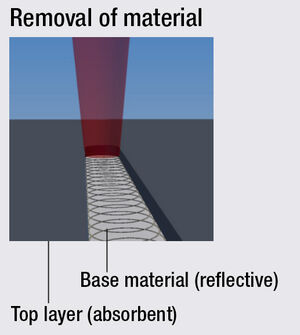
Removal of material
Coated materials can be labelled by removing the top layer with the laser. When removing the top layer of coated (e.g. anodised layers) or painted metals, the laser beam does not interact with the base material, but primarily with the top layer. It is reflected by the base material.
Multilayer plastics can be marked by removing a thin top layer. A typical example of the removal of a coating is the day/night design on control elements.
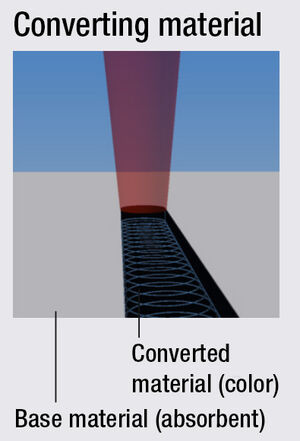
Converting material
Metals, ceramics and some plastics can be engraved with the laser. The power density of the laser beam is so high that the material is partially vaporised within a few nanoseconds during processing.
A depression is created in the material - the engraving. However, the material removal often also changes the colour and structure of the surface, making the engraving more visible.
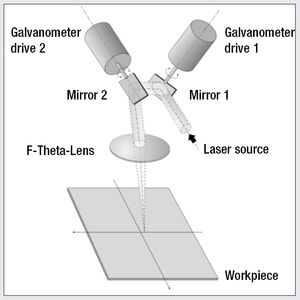
System description
Two types of laser are available for laser labelling:
Lasers with a wavelength of 1064nm have the largest range of applications. Metals can also be marked at this wavelength.
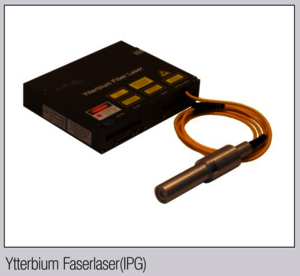
Fibre laser
Modern fibre lasers are particularly suitable for marking tasks. The advantages are
Fibre lasers are pumped with particularly long-life single emitter diodes.
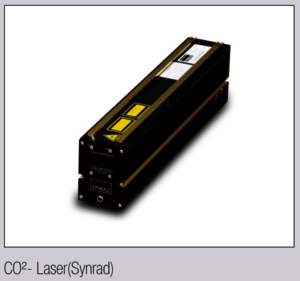
CO² laser
CO² lasers are not suitable for metals. However, the lower price and lower maintenance requirements make this type of laser interesting for labelling plastics, which fully absorb the laser power at a wavelength of 10640 nm.
This even applies to acrylic glass, which appears transparent to the human eye. CO² lasers from the market leader Synrad are used in Wolf labelling systems.
Control system
Wolf laser marking machines are controlled by an industrial PC with Siemens Soft PLC. This PC also controls the laser scanner. The control architecture allows integration into a wide variety of environments. If necessary, additional automatic functions can be controlled. The main control components communicate via:
with each other. This makes the control system easy to expand.